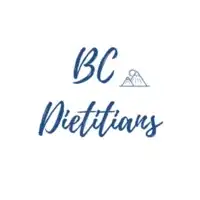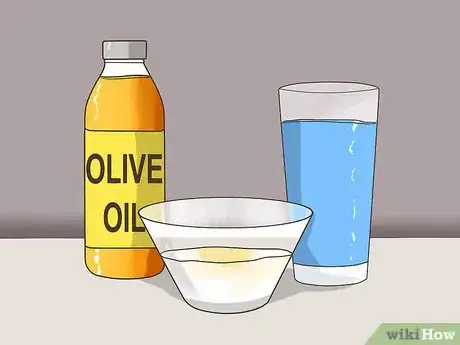This article was co-authored by Find BC Dietitians. Find BC Dietitians is a central hub of qualified nutrition experts in British Columbia, Canada with a mission to connect people to a registered dietitian best suited for their needs. BC Dietitians offer online consultations and provide evidence-based care on a wide range of nutrition matters such as diabetes, weight management, food allergies, eating disorders, and intuitive eating.
There are 8 references cited in this article, which can be found at the bottom of the page.
This article has been viewed 27,086 times.
The correct mixing of alkaline and acidic foods is sometimes referred to as "food combining." This diet is thought by some to allow you to optimize the way in which your body digests food. Proper digestion lets your body function at its best. To see these benefits, an individual should eat two times as many alkaline producing foods than acid producing foods. This approach to eating can be challenging at times, and well-designed clinical trials on this diet are lacking.
Steps
Categorizing Foods
-
1Identify alkaline-producing foods. All vegetables are considered alkaline foods. Broccoli, cucumber, and string beans are a few alkaline "power foods." Fruit that is fresh, with the exception of cranberries and plums, are also alkaline foods. Some dried fruits, dates and figs, count as well. Milk and almonds are generally alkaline foods when eaten on their own.
- If you forget the precise list, just go for leafy vegetables and bright fruits, such as watermelon.
- Alkaline foods are not processed, so if you find yourself buying canned or prepackaged, do a double-check. Even prepackaged lettuce (in salad mixes) can diminish the health benefits.
- Some foods have different pH if analyzed on their own, compared to the pH of one's urine after the foods have been processed by the body. For instance, lemon and tomatoes are on the acidic side but lead people to produce slightly alkaline urine.[1]
-
2Identify acidic foods. Meat, fish, poultry and eggs are generally acidic foods. Cereal, grains, and nuts are usually acid producing as well. Cheese is another common culprit with parmesan being ranked as the most acidic.[2]
- There is evidence that people who eat more cheese, meat, fish, grains, and processed foods have more acidic urine.[3]
- Be aware that even seemingly healthy items, such as wild cooked trout or salmon, can raise your body’s acid levels.
- Choosing low-fat versions of some foods, such as milk, can lower acid levels. This is a good compromise measure for those people who don’t want to drastically change their diet.
Advertisement -
3Identify neutral foods. A wide variety of waters are considered neutral — tap water, spring water, river water, and even sea water. They all exist at the center of the pH scale, ranking at 7.0. Olive oil and egg whites are also commonly considered to be neutral in nature.[4]
Developing a Meal Plan
-
1Eat primarily alkaline-producing foods. For every one serving of an acidic food, you should have four servings of an alkaline food. In order for the body to function at optimal efficiency, it must maintain a pH balance of 7.4. Eating additional alkaline foods keeps your body from taking nutrients from other areas in order to neutralize an acid-heavy diet.[5]
- If you want to be even more precise, you can invest in a food scale. Weigh each food portion carefully and write down the results in a notebook divided into two acid/alkaline columns. At the end of each day, add the columns up to see how close you got to the 4 per 1 ratio.
- For example, for lunch you could have a veggie sandwich. Try using whole-grain bread with hummus, avocados, and cucumbers packed inside. Fruit is always a good breakfast option.
-
2Consume fresh vegetables and fruits. This will provide you with the maximum nutritional benefit. If fresh produce is not available, frozen is the next best alternative. Canned produce should usually be avoided as it contains high levels of sodium and other add-ons.
- Not all vegetables and fruits are the same or equal, however. Try to vary your intake of produce so that you get the full array of benefits. Asparagus, for example, assists with the nervous system. Watermelon is helpful for hydration as it is 92% water.
-
3Eat unprocessed grains and starches. Although grains are usually acidic, there are natural options that count as alkaline. Purchase grains that are minimally packaged, the closer to fresh the better. Be creative when choosing grains.
- For example, amaranth is one that many people aren’t familiar with. It is high in protein, which is unusual for a grain. Quinoa, buckwheat, and millet are other grain options.
-
4Limit fats and sugars. This is always part of a healthy diet, but when you are mixing food categories, it is particularly important. Most people consume artificial and processed foods in these categories. Consuming foods high in fat and sugar pushes your pH level into acidic territory and can contribute to a host of health problems including diabetes and kidney damage.[6]
- Instead of eliminating desserts entirely, you might try making sweet treats from acidic foods, such as melons or apples. You will feel less deprived and make some progress toward your food combining goals.
- Watch your drink consumption as well. Many sugary drinks, such as soda, will throw off your pH balance as well. Just drinking one soda a day can increase your diabetes risk by 26%.[7]
Understanding the Science
-
1Visualize the pH scale. Picture a line with “1” on one end and “14” on the other. The acidity or alkalinity of food will fall somewhere on this line. A strong alkali will have a high value, such as 14, while a strong acid will have a low value, such as one. Neutrals, such as water, will have a pH value of seven.
- The pH measures the concentration of dissolved hydrogen ions, which then indicates acidity or alkalinity.
- You can measure the pH for more than just foods. Bleach, for example, has a pH of 13. Battery acid has a pH of zero.[8]
-
2Think of the effect on the body. Human blood maintains a pH of about 7.4. All major systems of the body work together in order to keep this number as consistent as possible. When you consider a food combination diet, the idea is that you are lessening some of the work that your body has to do to maintain balance.[9]
- Be aware of a food’s PRAL or “potential renal acid load” score. Simply put, a food can be acidic in composition, but can change to alkaline when you ingest it. Lemons and tomatoes are good examples of this transition. So, it may be helpful to print out a alkaline/acid reference sheet when shopping.[10]
-
3Monitor via body awareness. Gauge the success of your food combining by how you feel and whether or not your medical numbers (blood pressure, blood sugar levels, etc.) improve over time. Some people suggest testing the pH of your urine using test strips. However, this method may be quite inaccurate as your general medical history, the time of day the sample is collected, and medications can influence the results.
- The risk of following an alkaline diet is that it is confusing, misleading, can create fear towards some foods and can put you at risk of nutrient deficiencies.[11]
- If you are attracted to a specific claim around the alkaline diet, chat with your dietitian and they can help you to find foods and eating patterns that can support your unique situation.[12]
-
4Combine for the right reasons. Like any diet plan, you need to be committed to making a change in order for it to work. Sit and write down all of the health improvements that you hope to see as a result of following a combination food plan. For example, you might want to lose weight. If that is the case, ask yourself, “Is this the best possible way to safely lose weight?”
- Attach time periods to your goals. Give yourself one month to see a change in blood sugar levels or two months to drop a jean size.
- Consult a physician before changing your diet, some restrictive diets can interfere with your health. Your doctor will work with you to determine whether “food combining” is a good option for you.
Expert Q&A
Did you know you can get expert answers for this article?
Unlock expert answers by supporting wikiHow
-
QuestionWhat are alkaline and acidic foods?
 Find BC DietitiansFind BC Dietitians is a central hub of qualified nutrition experts in British Columbia, Canada with a mission to connect people to a registered dietitian best suited for their needs. BC Dietitians offer online consultations and provide evidence-based care on a wide range of nutrition matters such as diabetes, weight management, food allergies, eating disorders, and intuitive eating.
Find BC DietitiansFind BC Dietitians is a central hub of qualified nutrition experts in British Columbia, Canada with a mission to connect people to a registered dietitian best suited for their needs. BC Dietitians offer online consultations and provide evidence-based care on a wide range of nutrition matters such as diabetes, weight management, food allergies, eating disorders, and intuitive eating.
Registered Dietitians Group Foods have different pH if analyzed on their own, compared to the pH of our urine when they are processed by the body. On their own, milk and water are close to neutral, vinegar, lemon, tomatoes are on the acidic side, and eggs are slightly alkaline. However, lemon and tomatoes can lead you to produce a slightly alkaline urine. There is some evidence of vegetarians having urine on the alkaline side, and people eating more meat, cheese, fish, grains and processed foods having a more acidic urine. That is why they say that fruits and vegetables are alkaline and animal, processed foods are acidic. However, there is no clear information about how the pH may change with different amounts and combinations of foods, and even the relevance of eating an alkaline diet is unknown.
Foods have different pH if analyzed on their own, compared to the pH of our urine when they are processed by the body. On their own, milk and water are close to neutral, vinegar, lemon, tomatoes are on the acidic side, and eggs are slightly alkaline. However, lemon and tomatoes can lead you to produce a slightly alkaline urine. There is some evidence of vegetarians having urine on the alkaline side, and people eating more meat, cheese, fish, grains and processed foods having a more acidic urine. That is why they say that fruits and vegetables are alkaline and animal, processed foods are acidic. However, there is no clear information about how the pH may change with different amounts and combinations of foods, and even the relevance of eating an alkaline diet is unknown.
Warnings
- There are good studies to show that eating an excess of acid-forming foods (for most people that means a lot of meat) can result in bone loss, because the body will pull calcium out of the bone. Alkaline-forming foods, mainly fruits and veggies, have a positive effect on bone retention.⧼thumbs_response⧽
- The health advantages offered by this diet are not supported by science based evidence , but the recommendation to include more fruits and vegetables is always a good choice.⧼thumbs_response⧽
- Eating out may be a challenge. Go online and look at restaurant menus in advance. Order meals with as few ingredients as possible, making it easier to track the alkaline/acidic balance.⧼thumbs_response⧽
References
- ↑ Find BC Dietitians. Registered Dietitians Group. Expert Interview. 22 October 2020.
- ↑ http://www.doctoroz.com/article/25-acid-promoting-foods
- ↑ Find BC Dietitians. Registered Dietitians Group. Expert Interview. 22 October 2020.
- ↑ https://chopra.com/articles/neutralize-your-body-ph-with-the-right-foods
- ↑ https://chopra.com/articles/neutralize-your-body-ph-with-the-right-foods
- ↑ http://www.doctoroz.com/article/25-alkaline-promoting-foods
- ↑ https://www.hsph.harvard.edu/nutritionsource/healthy-drinks/soft-drinks-and-disease/
- ↑ http://www.choose-healthy-eating-for-life.com/pH-scale.html#.V8dUz5grK00
- ↑ http://www.foodandnutrition.org/May-June-2016/Alkaline-Diet-Does-pH-Affect-Health-and-Wellness/
- ↑ http://www.foodandnutrition.org/May-June-2016/Alkaline-Diet-Does-pH-Affect-Health-and-Wellness/
- ↑ Find BC Dietitians. Registered Dietitians Group. Expert Interview. 22 October 2020.
- ↑ Find BC Dietitians. Registered Dietitians Group. Expert Interview. 22 October 2020.
- ↑ http://www.shape.com/healthy-eating/diet-tips/ask-diet-doctor-alkaline-foods-vs-acidic-foods
















-Step-3-Version-3.webp)





















































Medical Disclaimer
The content of this article is not intended to be a substitute for professional medical advice, examination, diagnosis, or treatment. You should always contact your doctor or other qualified healthcare professional before starting, changing, or stopping any kind of health treatment.
Read More...